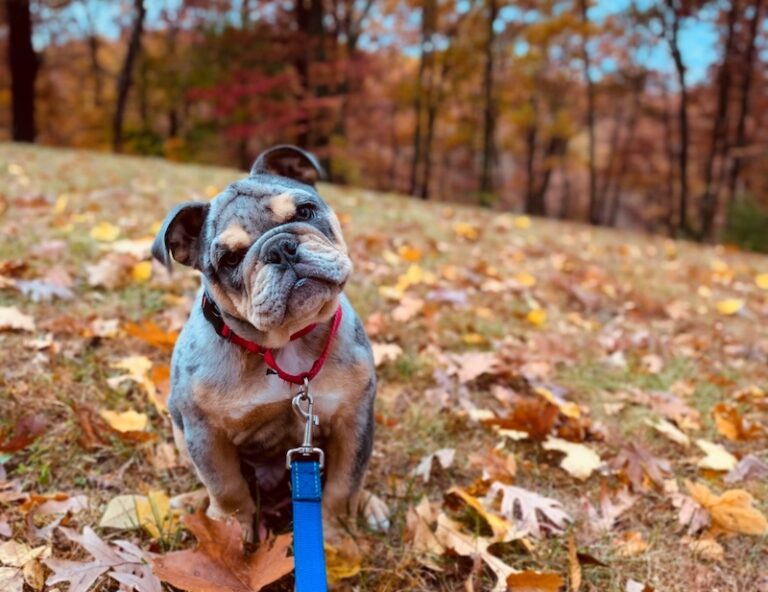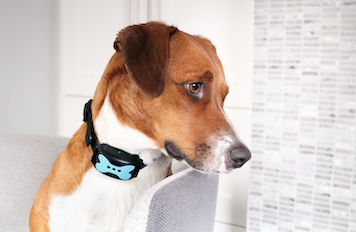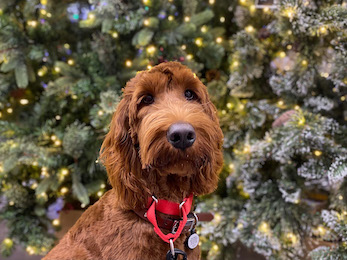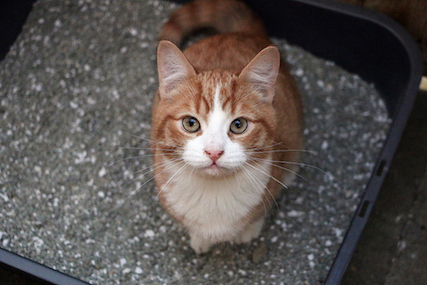The first 5 commands to teach a puppy include sit, down, stay, come, and leash walking. In my practice, we focus on these behaviors because they can be used throughout your puppy’s life. They can be used nearly anywhere and are necessary foundational behaviors for advanced obedience. They are critical to getting your puppy out in more social situations and enjoying life with you. You can start teaching these behaviors early and continue building on them with advanced distractions once your puppy is ready.
Sit
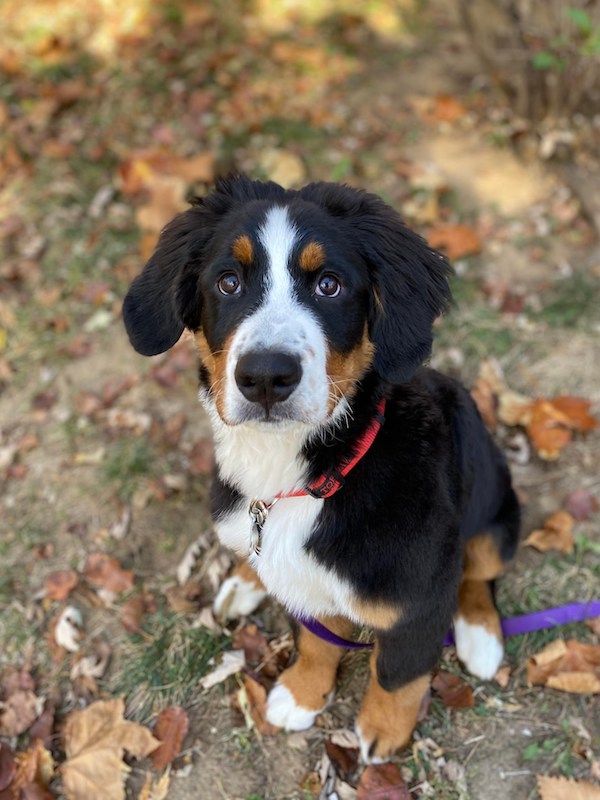
Sit can be defined as your puppy’s bottom and all four paws on the ground. Their chest is upright. Sit is usually one of the first commands puppy owners teach. It is relatively easy to teach, and most adult dogs know “sit” to some degree. In our practice, we teach sit using a bridge word and a food lure. Once your puppy is reliably following the lure, the lure is faded to a hand signal. For more on how to teach your puppy using a bridge word, food lure, and hand signal, check out my blog here. As your puppy is more compliant with your hand signal for sit, begin saying, “sit,” pause for a moment, and deliver the hand signal. Be sure to release your puppy after each sit with “okay” or “free.” Soon your puppy will be reliable with the verbal command “sit.”
As your puppy begins mastering “sit,” start preparing them for distractions. You can practice in your yard, around your neighborhood, and even in public areas. Start with lower-level distractions and begin introducing more significant and more extensive distractions. As you practice, the goal is to have your puppy know “sit” with the verbal command only because it will start the foundation for a more advanced sit command.
An advanced version of sit—one to introduce after your puppy has mastered sitting near you and around heavy distractions– is what I refer to as a “distant sit.” A “distant sit” is when your dog sits while they are away from you. It is beneficial when your dog is off-leash and gives you almost complete control. A distant sit can be started in a low to no-distracting environment with your puppy tethered 6-10 feet away from you. Say your puppy’s name and “sit” very clearly. If they do not sit, offer an exaggerated hand signal at a distance with your arm reaching away from your body. Continue until your puppy is successful several times, and then remove the tether. Quickly find an opportunity when your puppy is 6-10 feet away. Again, ask them to sit. If your puppy starts to walk towards you, widen your body and move towards them until they stop. This movement can be subtle for puppies who are sensitive to space. Offer 1-3 hand signals until your puppy is successful. Continue practicing as you did with “sit” and increase distractions day by day.
Down
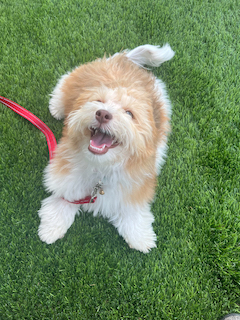
Down can be defined as your puppy lying on the ground and should be distinguished from “getting down” off furniture, a kitchen counter, etc. Down is taught much of the same way sit is taught—with a food lure! It should be started with your puppy in a standing position rather than a sitting position. I prefer not to chain down to sit and keep it an entirely different command. It is a bit more work initially but produces a better result long term. In addition to the lure, you will also want to use shaping to teach down. Shaping involves reinforcing small increments of behavior that resemble the final behavioral product. For down, start by luring your puppy’s nose to the ground. Push the treat towards their chest and between their front paws. If your puppy’s chest touches the ground, use a bridge word, and feed them the lure. Continue repeating until your puppy reliably puts their chest on the ground, and then wait for them to put their bottom on the ground before bridging and treating. After each trial, release your puppy with “okay” or “free” followed by no treats. You have successfully shaped a down command! Introduce the hand signal and verbal cue just like you did for sit. Be patient with yourself and your puppy because down is a more challenging behavior.
Once your puppy masters down, a distance down can be taught just like with sit.
Stay
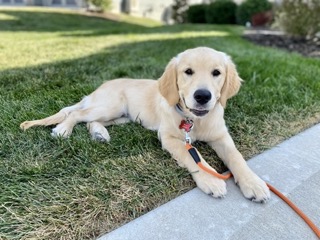
Stay can be defined as remaining in a sit or down command and not moving. For longer-duration behaviors, I prefer down-stay over sit-stay because it is less effortful for dogs. A sit-stay is more practical for brief periods on a walk while you tie your shoe or clean up after your puppy. Stay is the only behavior I recommend chaining to another behavior. In other words, your puppy should be in a sit or down first and then given the command to stay. When teaching stay, you will incorporate the 3 D’s of dog training: distance, duration, and distractions. Distance refers to how far away you get from your puppy, duration refers to the time across treats and the entire term of the stay, and distractions refer to anything in the environment. For stay, ask your puppy to sit or down and begin by standing next to your puppy and bridge and treat, starting to shape duration. Once your puppy consistently stays for about 5 seconds between treats, introduce the word “stay” and start moving your feet. Bridge and treat if your puppy seems distracted but remains in a stay. If they break command, simply take them back to the area and ask them to sit or down and stay again. Do not give them a reward. Continue shaping small durations and distractions until you can walk away from your puppy to work on distance. Across all 3 Ds, bridging when it is the most difficult for your puppy is essential. The bridge will help communicate that staying at the most challenging time earns the reward. After you bridge, always return to your puppy to give a food reward. After 3-5 treats, release your puppy with an “okay” or “free” followed by no delivery of food.
Come
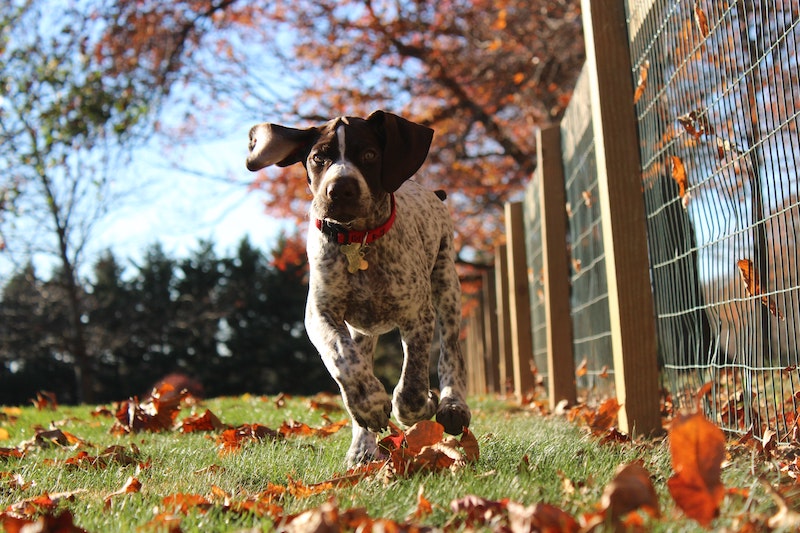
Come when called can be defined as your puppy moving towards you and sitting in front of you, allowing you to grab their collar. The basis for come is your puppy knowing their name well. This can be started by saying their name once and popping a treat into their mouth. This can help pair something pleasant with their name and can be done in back-to-back trials of saying their name and offering a treat. Repeat 10-20 trials. You will start to notice your puppy turn their head when they hear their name. When this happens, attempt to get your puppy’s attention off of you, say their name, bridge when they turn their head towards you, lure them close to your body and within reach, and feed. After each trial do not forget to release your puppy with “okay” or “free.” Repeat throughout your home with minimal distractions. After several successful trials, begin luring your puppy into a sitting position before feeding. Repeat 5-10 more trials. Once your puppy is reliably coming towards you and sitting, fade the food out of your hand and grab your puppy’s collar before feeding the treat. Once your puppy has mastered come when called indoors, purchase a long line and start introducing more significant distractions outside. Just like with sit, down, and stay, begin preparing your puppy for more extensive distractions day by day.
Heel
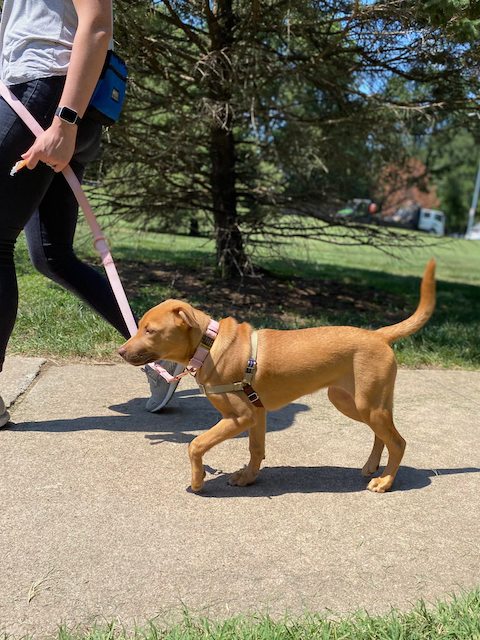
Heel can be defined as walking on the left side (or right side, if you prefer) with slack in the leash and the dog’s nose not crossing the plane of the handler’s leg. Dogs should face the same direction as the handler and remain in position regardless of the handler’s pace. It is an essential skill for all dogs to learn. Proper leash walking in heel position is necessary to access walks or outings positively.
Like the other critical obedience behaviors, the heel is taught indoors with minimal distractions and a lure. Start by tossing a treat away and then lure your puppy into the position you want—bridge and deliver a treat as they come to the proper place. Repeat several times and move your lure to your chest to serve as a hand signal. After several successful trials, begin saying, “heel” if you can predict your puppy is headed to the position you want. Continue repeating until your puppy is reliably moving into position. Now it’s time to walk! Using shaping, like with the stay command, begin moving but this time bridge and treat when your puppy moves with you. You can coax them along with some praise if they do not move with you. Start with a step or two and lengthen the time between treats. If your puppy moves out of position ahead of you at any point, make a turn such that they turn around and follow you. If your puppy is lagging, speed up. In other words, move in the opposite direction your puppy is moving when they get out of position. As your puppy masters heel indoors, attach a long line and head outdoors to a safe area. I prefer to start on concrete because distractions are lower than in a grassy space. Continue practicing, and you will have a great start to an off-leash heel at a very young age!
Although off-leash is more advanced and attainable, it might only sometimes be practical to have your puppy on a long line or completely off-leash. I recommend purchasing an Easy Walk Harness and beginning practicing heel on-leash. You can follow the same exercise as you did with an off-leash heel, except if your puppy pulls ahead out of position, stop, pull them behind the plane of your leg, and continue walking once there is no tension in the leash. If they lag, speed up and put tension on the leash. Once they catch up, slow down again. As your puppy masters on-leash heel, it’s time to increase distractions and prepare your puppy for more advanced distractions, just like with all other basic commands.
Sit, down, stay, come, and heel are my top 5 obedience behaviors to teach puppies
If you are interested in more obedience behaviors, I recommend “go to your place” and “wait” at doorways to round out the top 7 obedience behaviors to teach puppies. I prefer these basic commands because they are the foundation and in some ways the gateway to off-leash behavior. In some ways, there is nothing basic about these behaviors! With consistency and 1-1.5 hours of training per day five days per week, your puppy can master these skills in distracting environments within four weeks. Work at your pace and incorporate advanced distractions when you are ready.
